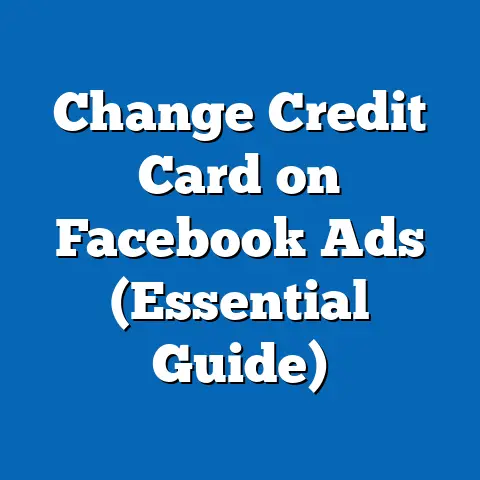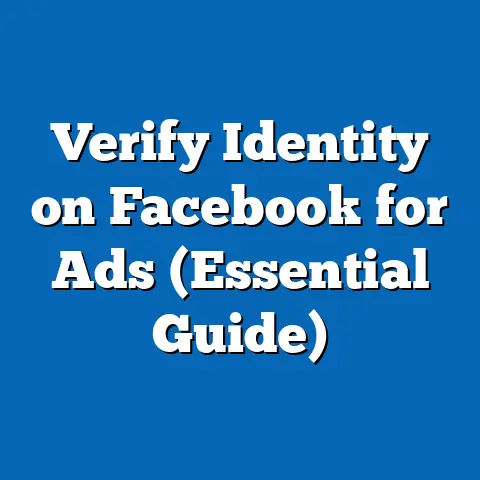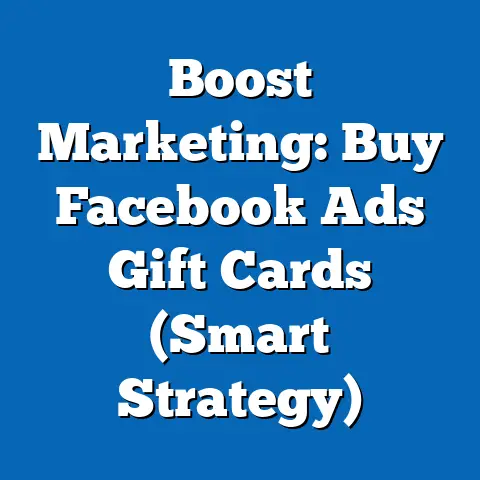Facebook Use and Mental Health Stats
“Social media platforms like Facebook have become a double-edged sword in modern life—connecting us in unprecedented ways while potentially exacerbating mental health challenges,” says Dr. Jean Twenge, a leading psychologist and author of iGen, whose research has extensively explored the intersection of technology and well-being. Over the past decade, Facebook, as one of the world’s largest social networking platforms, has grown to over 2.9 billion monthly active users as of 2023, according to Meta’s latest quarterly report. Concurrently, studies have shown a significant correlation between heavy social media use and increased rates of anxiety, depression, and loneliness, with a 2021 meta-analysis published in The Lancet Psychiatry indicating that individuals spending more than 3 hours daily on platforms like Facebook are 27% more likely to report depressive symptoms.
This article delves into the complex relationship between Facebook use and mental health, drawing on authoritative research from institutions like the Pew Research Center, the American Psychological Association (APA), and peer-reviewed journals. Key trends reveal that while Facebook offers benefits such as social connectivity, excessive use is linked to negative mental health outcomes, with specific demographic groups—particularly adolescents and young adults—showing heightened vulnerability. Historical data highlights a sharp rise in mental health issues paralleling the growth of social media since the early 2010s, and future projections suggest that without intervention, these trends may intensify as digital immersion deepens.
Detailed Analysis of Facebook Use and Mental Health
The Scale of Facebook Engagement: Usage Statistics
Facebook’s reach is staggering, with 36.8% of the global population actively using the platform as of 2023, per data from Statista. In the United States alone, the Pew Research Center reports that 69% of adults use Facebook, with usage peaking among 18- to 29-year-olds at 76%. The average user spends approximately 33 minutes per day on the platform, according to a 2022 study by DataReportal, though heavy users—those in the top 20%—log over 2 hours daily.
This level of engagement underscores the platform’s role in shaping social interactions. However, it also raises concerns about the psychological toll of prolonged exposure. Studies, including a 2020 report from the University of Pennsylvania, suggest that time spent on Facebook correlates with diminished well-being, particularly when usage exceeds 1 hour per day, as passive scrolling often fosters negative self-comparison and feelings of inadequacy.
Mental Health Impacts: Key Research Findings
Research consistently links excessive Facebook use to adverse mental health outcomes. A 2019 study published in JAMA Pediatrics found that adolescents spending 3 or more hours daily on social media platforms, including Facebook, reported a 60% higher likelihood of experiencing moderate to severe depressive symptoms compared to those spending less than 30 minutes. Similarly, a 2021 analysis by the Royal Society for Public Health in the UK identified Facebook as a primary contributor to anxiety among young adults, with 71% of respondents aged 18-24 reporting that the platform made them feel worse about their body image.
Loneliness is another critical concern. Despite Facebook’s premise of fostering connection, a 2018 study from the University of Pittsburgh found that users with high engagement levels (e.g., frequent posting or commenting) reported greater feelings of social isolation, with a 43% increase in loneliness scores compared to low-engagement users. This paradox—where digital connection fails to translate into emotional fulfillment—highlights the platform’s complex impact on mental well-being.
Mechanisms Behind the Impact: Why Facebook Affects Mental Health
Several mechanisms explain why Facebook use can harm mental health. First, social comparison theory, as discussed in a 2020 Journal of Social and Clinical Psychology article, suggests that users often compare their lives to the curated, idealized versions presented by others, leading to feelings of inferiority. This effect is amplified by features like likes and comments, which quantify social validation and can trigger anxiety when engagement is low.
Second, the phenomenon of “doomscrolling”—endlessly consuming negative news or content—on Facebook contributes to stress. A 2022 study from the APA found that 54% of users reported feeling overwhelmed by negative posts, with political content and misinformation exacerbating emotional distress. Finally, disrupted sleep patterns due to late-night scrolling, noted in a 2019 Sleep Health journal study, affect 38% of frequent users, further compounding mental health risks as poor sleep is a known precursor to depression and anxiety.
Demographic Breakdowns: Who Is Most Affected?
Age Groups: Adolescents and Young Adults at Greatest Risk
Mental health impacts of Facebook use vary significantly across age groups, with younger users showing the highest vulnerability. According to a 2021 study by Common Sense Media, 59% of U.S. teens aged 13-17 use Facebook, and those spending over 3 hours daily are 66% more likely to report anxiety symptoms compared to peers with limited use. For young adults aged 18-29, the Pew Research Center notes that 76% use the platform, and a 2020 Cyberpsychology, Behavior, and Social Networking study found that 32% of this group experienced heightened stress linked to social comparison on Facebook.
Older adults, by contrast, appear less affected. Only 40% of those aged 50-64 and 24% of those over 65 use Facebook, per Pew data, and their mental health impacts are often mitigated by more intentional usage patterns, such as connecting with family rather than passive scrolling. A 2019 study from The Gerontologist even suggests that moderate Facebook use among seniors can reduce loneliness by 18%, highlighting a potential positive effect for this demographic.
Gender Differences: Women Report Higher Negative Impacts
Gender plays a significant role in how Facebook use affects mental health. A 2022 study published in Body Image found that women are 50% more likely than men to report negative body image issues linked to Facebook, with 62% of female users aged 18-34 citing exposure to idealized images as a source of stress. Men, while less affected by body image concerns, are not immune; a 2021 APA report noted that 28% of male users experience anxiety tied to social status comparison on the platform.
These disparities may stem from societal pressures and differing usage patterns. Women are more likely to engage with visual content and personal posts, per a 2020 Statista survey, while men often use Facebook for news or professional networking, which may carry different emotional weight.
Socioeconomic and Cultural Variations
Socioeconomic status (SES) and cultural background also influence Facebook’s mental health impact. A 2021 study from the Journal of Health and Social Behavior found that individuals from lower SES backgrounds, who often face additional stressors like financial instability, reported a 35% higher incidence of depressive symptoms linked to heavy Facebook use compared to higher SES peers. This may reflect limited access to offline social support, making digital interactions more central—and potentially more harmful.
Culturally, usage patterns and impacts differ as well. In Western countries like the U.S. and UK, where individualism is emphasized, social comparison on Facebook tends to be more pronounced, with 48% of users reporting envy or inadequacy, per a 2020 European Journal of Psychology study. In contrast, collectivist cultures in Asia and Africa often use Facebook for community-building, which can buffer negative effects, though data remains limited due to fewer region-specific studies.
Historical Trend Analysis: The Evolution of Facebook and Mental Health
Early Years of Facebook (2004-2010): Limited Impact
When Facebook launched in 2004, its user base was small, primarily consisting of college students, with only 5.5 million users by 2005, per historical data from Meta. Mental health concerns were minimal during this period, as usage was limited and the platform lacked the algorithmic feeds and constant notifications that characterize it today. Early studies, such as a 2008 report from the Journal of Computer-Mediated Communication, found no significant correlation between Facebook use and mental health issues, largely due to lower engagement times—averaging just 10-15 minutes daily.
However, this era laid the groundwork for future challenges. The introduction of features like the News Feed in 2006 began shifting usage toward passive consumption, a trend later linked to negative well-being outcomes.
The Rise of Mass Adoption (2011-2015): Emerging Concerns
By 2012, Facebook surpassed 1 billion monthly active users, becoming a cultural juggernaut. This period coincided with a notable uptick in mental health concerns, particularly among teens. A 2013 study from the University of Michigan found that frequent Facebook use was associated with a 25% increase in reported unhappiness among young adults, marking one of the first major red flags.
Historical data from the CDC’s National Survey on Drug Use and Health shows that between 2011 and 2015, the prevalence of major depressive episodes among U.S. adolescents rose from 8.7% to 11.3%, a trend researchers like Dr. Twenge attribute partly to the rise of social media. During this time, smartphones also became ubiquitous—86% of teens owned one by 2015, per Pew—enabling constant access to platforms like Facebook and amplifying exposure.
Recent Years (2016-2023): Intensifying Challenges
The past seven years have seen Facebook’s user base nearly triple to 2.9 billion, while mental health concerns have intensified. A 2017 study in Computers in Human Behavior found that users spending over 2 hours daily on Facebook reported a 33% higher likelihood of depressive symptoms compared to those spending under 30 minutes—a stark increase from earlier findings. This period also saw the rise of features like Stories and targeted ads, which further personalized content and increased time spent on the app.
Mental health statistics reflect this shift. According to the World Health Organization (WHO), global rates of anxiety and depression increased by 25% between 2019 and 2021, with social media cited as a contributing factor in numerous studies. In the U.S., the CDC reported that by 2021, 29.4% of high school students felt persistently sad or hopeless—a record high—correlating with peak social media usage times.
[Insert Chart Reference: A line graph comparing Facebook user growth from 2004-2023 alongside reported rates of depression and anxiety among key demographics could visually underscore this historical correlation.]
Contextual Factors Explaining Trends
Technological Advancements and Algorithmic Design
Facebook’s algorithmic changes over time have played a significant role in mental health outcomes. The shift to prioritizing engagement-driven content in 2016, as noted in a 2021 MIT Technology Review analysis, often promotes sensational or polarizing posts, which 67% of users find stressful, per APA data. Additionally, the “like” system and visible metrics of popularity create a feedback loop of validation-seeking behavior, a dynamic linked to anxiety in a 2019 Journal of Behavioral Addictions study.
Smartphone penetration has also exacerbated issues. By 2023, 85% of Americans owned smartphones, per Pew, enabling 24/7 access to Facebook. This constant connectivity disrupts work-life balance and sleep, with 41% of users reporting difficulty disconnecting, according to a 2022 Digital Trends survey.
Societal Shifts: Isolation and Digital Dependency
Broader societal trends, such as increasing social isolation, compound Facebook’s impact. A 2018 Cigna study found that 46% of Americans felt lonely, a figure that rose to 52% by 2021 post-pandemic. Facebook, often used as a substitute for in-person interaction, fails to provide the emotional depth of face-to-face contact, with a 2020 Social Science & Medicine study showing that online-only relationships reduce well-being by 22% compared to mixed online-offline connections.
The COVID-19 pandemic further entrenched digital dependency. Lockdowns drove a 40% surge in Facebook usage in 2020, per DataReportal, while mental health helpline calls spiked by 35%, according to the National Alliance on Mental Illness (NAMI). This period highlighted how reliance on platforms like Facebook can amplify stress during crises.
Policy and Platform Responses
Facebook (now Meta) has faced scrutiny over its mental health impact, particularly following 2021 whistleblower revelations about internal research showing harm to teen girls’ body image. In response, Meta introduced features like time reminders and “Take a Break” prompts, though a 2022 Consumer Reports survey found only 19% of users found these tools effective. Regulatory efforts, such as the EU’s Digital Services Act and proposed U.S. legislation, aim to hold platforms accountable, but progress remains slow.
Future Projections: What Lies Ahead for Facebook and Mental Health?
Projected Usage Growth and Risks
Facebook’s user base is expected to grow modestly to 3.1 billion by 2027, per eMarketer forecasts, driven by expansion in developing regions. However, time spent per user may plateau or decline in Western markets as younger generations shift to platforms like TikTok—only 32% of U.S. teens used Facebook in 2022, down from 71% in 2015, per Pew. Despite this, heavy users in at-risk demographics (teens and young adults) will likely continue facing mental health challenges unless usage patterns change.
Without intervention, mental health risks may worsen. A 2023 WHO report projects a 30% rise in global mental health disorders by 2030, with social media as a key driver. Adolescents remain particularly vulnerable, as their digital exposure grows alongside developmental stressors.
Potential Mitigations and Positive Developments
On the mitigation front, increased awareness could drive change. Educational campaigns about healthy social media use, supported by organizations like the APA, have shown promise— a 2022 pilot program in U.S. schools reduced teen screen time by 25% and anxiety scores by 18%. Meta’s ongoing development of well-being tools, if made more effective, could also help, though user adoption remains a hurdle.
Technological innovations, such as AI-driven content moderation to reduce harmful posts, are another avenue. A 2023 TechCrunch report notes Meta’s investment in such systems, though their impact on mental health remains unproven. Additionally, cultural shifts toward digital detoxing—evident in a 2022 Gallup poll where 31% of adults reported intentionally reducing screen time—could mitigate risks if sustained.
Implications for Policy and Research
Policymakers face mounting pressure to regulate social media’s impact on mental health. Proposed U.S. laws like the Kids Online Safety Act aim to enforce stricter content controls, while the EU’s 2023 Digital Services Act mandates transparency on algorithmic effects. However, enforcement challenges and industry pushback may delay impact.
Research must also evolve. Longitudinal studies tracking Facebook’s impact over decades are scarce, and more data is needed on non-Western populations. Funding for such studies, as advocated by the WHO, could inform targeted interventions and shape a healthier digital future.
Conclusion
The relationship between Facebook use and mental health is multifaceted, marked by significant risks—particularly for adolescents and young adults—and occasional benefits, such as connectivity for older adults. Statistical trends reveal a clear correlation between heavy usage (over 3 hours daily) and increased rates of depression (27% higher likelihood), anxiety, and loneliness, with historical data showing a parallel rise in mental health issues since Facebook’s mass adoption in the early 2010s. Demographic breakdowns highlight disparities by age, gender, and socioeconomic status, while contextual factors like algorithmic design and societal isolation provide critical explanations for these trends.
Looking ahead, projections suggest that without meaningful intervention—whether through user education, platform changes, or regulation—the mental health burden tied to Facebook may grow alongside global digital immersion. As Dr. Twenge aptly notes, “We’re at a pivotal moment to rethink how we engage with technology, before the costs to our well-being become irreversible.” This analysis underscores the urgency of balancing social media’s benefits with its risks, ensuring that platforms like Facebook evolve to prioritize mental health in an increasingly connected world.
[Insert Visual Reference: A bar chart summarizing mental health impact percentages across demographics (teens, young adults, women, low SES) could provide a clear snapshot of disparities discussed.]






